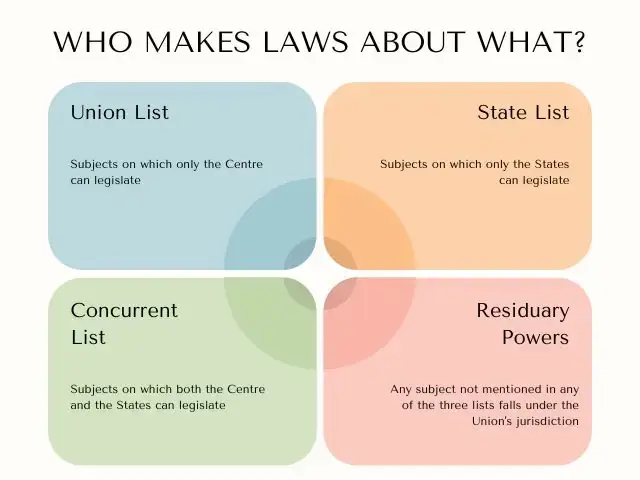In India, the legislative relations between the Centre (Union Government) and the States are defined by the Constitution, particularly in Part XI, which covers the distribution of legislative powers.
This distribution is intended to balance the autonomy of the States with the authority of the Centre, ensuring a federal structure with a unitary bias.
India has a system where both the Centre (the central government) and the States (regional governments) can make laws. This system is designed to make sure that both the Centre and the States can govern effectively.

Key Features:
Three Lists in the Seventh Schedule:
- Union List: Only the Centre can make laws on these subjects e.g., Defense (like the Army and Navy), Foreign Affairs (relationships with other countries), and Railways (trains and train stations).
- State List: Subjects on which only the States can legislate e.g., Police (law enforcement in the state), Public Health (hospitals and health services), and Agriculture (farming).
- Concurrent List: Subjects on which both the Centre and the States can legislate (e.g., Education (schools and colleges), Marriage (laws about getting married), and Forests (conservation and use of forest land). If there is a conflict, the Centre’s law wins.
Residuary Powers:
Any subject not mentioned in any of the three lists falls under the Union’s jurisdiction.
Doctrine of Repugnancy
If any State law conflicts with a Union law on a Concurrent List subject, the Union law prevails.
Parliament’s Power over State List
Under certain circumstances, such as during a national emergency, the Parliament can legislate on matters in the State List.
Governor’s Role
The Governor can reserve certain types of bills passed by the State Legislature for the consideration of the President.
Article 249
Allows the Parliament to legislate on a matter in the State List if it is in the national interest, provided that a resolution is passed by the Rajya Sabha with a two-thirds majority.
Table: Distribution of Legislative Powers
| Category | Authority | Example Subjects |
|---|---|---|
| Union List | Centre | Defence, Foreign Affairs, Atomic Energy |
| State List | States | Police, Public Health, Agriculture |
| Concurrent List | Centre and States | Criminal Law, Marriage, Bankruptcy |
| Residuary Powers | Centre | Any subject not mentioned in any list |
Summary
India’s legislative framework is designed to balance the authority between the Centre and the States, with a clear demarcation of subjects through the Union, State, and Concurrent Lists.
While the Centre holds supremacy in certain areas, the States also enjoy significant legislative powers within their jurisdictions.
This system allows for both centralized policy-making and regional autonomy, ensuring a dynamic yet balanced federal structure.



